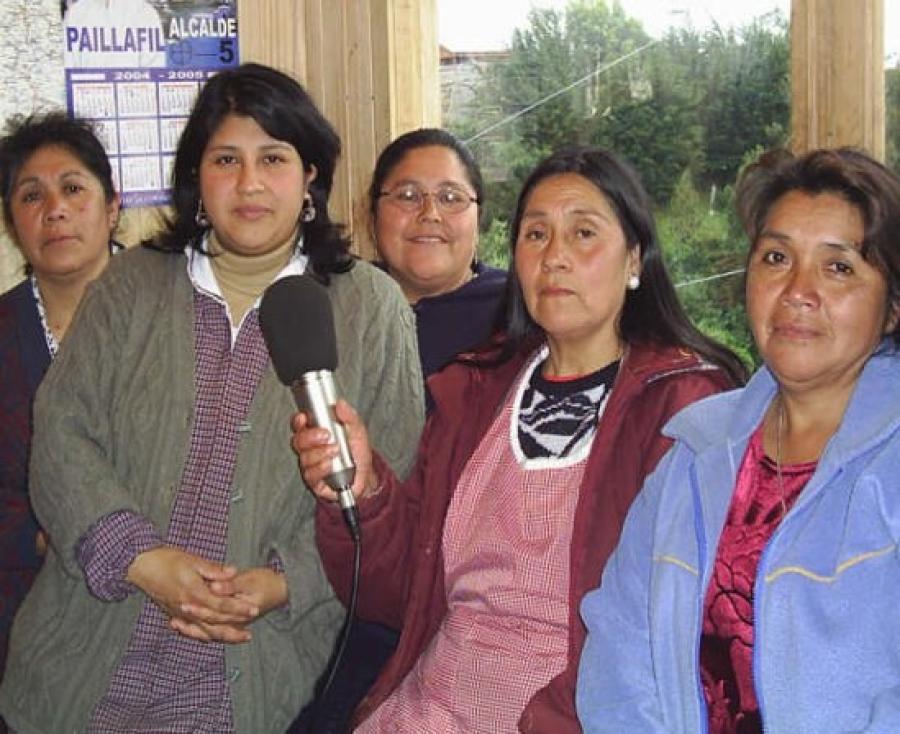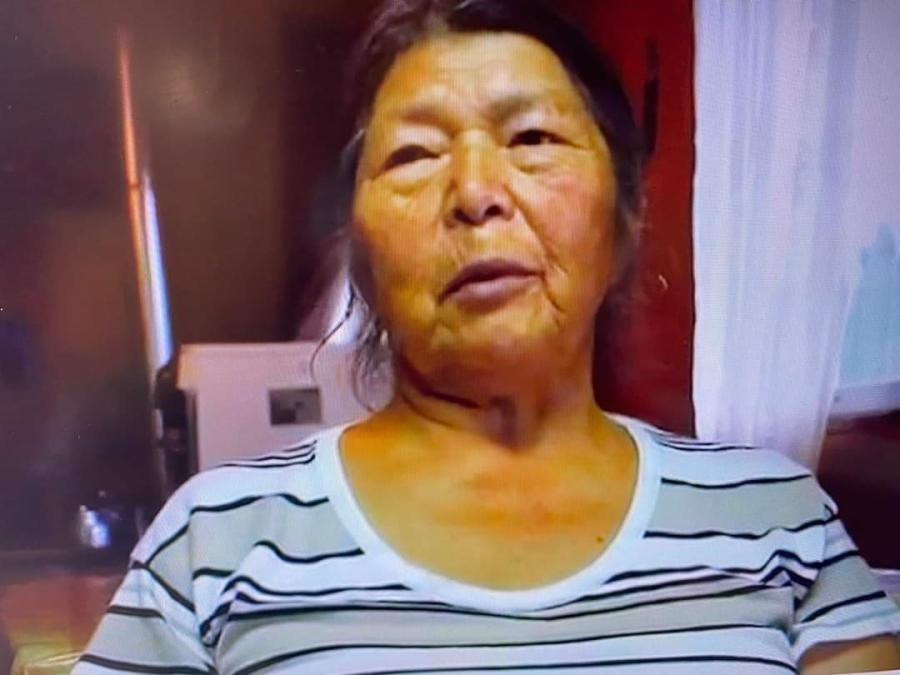Like the rugged landscape that it covers, the Araucaria araucana tree is a fixture in the traditions and culture of the Mapuche people of the Andean foothills in central Chile and southwest Argentina (see page __ for more on the Mapuche). Known by the local people as pewen and by English speakers as the “monkey-puzzle” tree, the Araucaria araucana is native to Chile and is the country’s national tree. For thousands of years, the pewen has remained not only an important source of food for the Mapuche, but this tough, life-giving tree has also inspired the legendary strength and resilience of the Mapuche people themselves.
The pewen is the hardiest of the Araucaria conifers, able to grow in extreme mountain conditions. It can reach heights of 150 feet with a trunk width of 6 feet. Though it is an evergreen and produces cones, it is not a pine. Instead, the tree has small, pointed triangular leaves that are thick and waxy. Its great height is indicative of its age: some of the tallest pewen trees are over 1,300 years old. Adult pewens have a distinct umbrella shape that towers over all other often-stunted trees in their high-altitude habitat. Their pronounced upward-curving branches give the trees a convoluted appearance, which one observer noted would “puzzle even a monkey” to climb, hence the name “monkey-puzzle” tree. It’s not just the pewen’s branches that are unique. The cones of a female pewen can reach an astounding 8 inches in diameter. Roughly 120 seeds grow in each cone until they ripen slowly over a couple of years at a length of 1 to 2 inches each.
Rural Mapuche rely on the pewen trees in traditional family groves for food, shelter, medicine, and a means to preserve their traditional way of life. While it is now illegal to cut down pewens (they are classified as “Endangered” by the International Union for Conservation of Nature), the Mapuche gather fallen branches to use for firewood, building shelters, and making crafts and use the resin for medicinal purposes, since they believe it to relieve pain and heal minor wounds. But most importantly, the pewen is an invaluable source of food, specifically carbohydrates. The trees’ seeds (piñones in Spanish or ngülliw in Mapu-dugun language) are consumed by people and livestock, and are sold at markets for extra income. Since the trees are so tall, families usually harvest the seeds after they fall to the ground. Sometimes, however, the men climb the trees and use long sticks to knock the seed-filled cones to the ground. Piñones are particularly important in times of food scarcity, since they can last up to four years if properly dried and stored. They are economical, too, because their high carbohydrate (64 percent) and fiber content (25 percent) makes them filling.
Not only are piñones an excellent source of nutrition, they are also tasty. Usually boiled or roasted and served whole with a sprinkling of ground chili pepper and coriander seed, they have a mild, nutty flavor. The raw seeds can be ground into flour to make bread or boiled and fermented to make an alcoholic drink called chavid. The Mapuche incorporate piñones into soups, salads, casseroles, and use them as a starchy component in a variety of dishes.
The name “Mapuche” means “people of the land,” and one branch calls itself the Pewenche, or “people of the pewen.” Traditional Mapuche belief is that everything in nature has a spirit, or godly representation, so one must ask permission from the spirits and say a prayer of thanks before using something from the environment, such as piñones. Some Mapuche assign lineages to pewen trees and consider the trees sacred. They also tend to harvest only ripe pewen seeds, since some believe that picking unripe ones offends the spirits that inhabit the pewen trees, a practice that helps ensure propagation of the seeds. The spiritual leader of the community, called a machi—usually a woman—not only provides herbal remedies to the ailing but also communicates to the family of gods on behalf of the whole village and their pewen groves.
The pewen forests need their help: Since 1977, logging and clearing land for commercial forestry plantations have destroyed an estimated two-thirds of South America’s Araucaria forests; many of the remaining groves—though now protected under CITES—are fragmented. But there is hope. Looking to the future, the Mapuche have started cultivating the slow-growing, life-giving trees as part of their ongoing struggle to regain their traditional lands and maintain their livelihood. Both the forests and the Mapuche communities stand to benefit.
Mapuche Piñones Soup
100 gm piñones (about ¼ cup)
½ onion
½ carrot
1 green onion
Chopped cilantro, to taste
Salt, pepper and merquén (powdered chili and coriander seed) to taste
Pork fat or lard
Broth
Cut the pork fat in small pieces and render, saving the cracklings. Dice the onion, green onion, and carrot. Sauté the onion, green onion, and carrot in the fat (or lard). Add the cracklings, the piñones, and the broth, and season to taste. Simmer for about 15 minutes. Serve sprinkled with cilantro.
Piñon Croquets with Merquén
500 gm. piñones (about 1 cup)
½ onion
1 clove garlic
½ green pepper
2 tablespoons chopped parsley
½ cup of dry bread crumbs
2 eggs
2 tablespoons of merquén (or other mild to medium powered chili, if unavailable)
Salt and pepper
Cook the piñones in salted water for 1 hour. Then peel them and grind into flour (try a food processor.) Dice the onion, green pepper, and garlic. Sauté the onion and garlic, then add the green pepper. Add the sautéed vegetables, the eggs, parsley, breadcrumbs, and the merquén to the ground piñones. Season with salt and pepper. Form croquets and fry in deep fat at 350°F.
“Sopa de Pinones” recipe, courtesy of Sandra Román; “Croquetas de Piñones al Merkén” recipe, courtesy of Felipe Pizarro). Both recipes translated by James Stuart, a North American anthropologist living in Chile and author of http://eatingchile.blogspot.com/.
Lauren Wolfenden was an intern at Cultural Survival during the spring of 2010.


